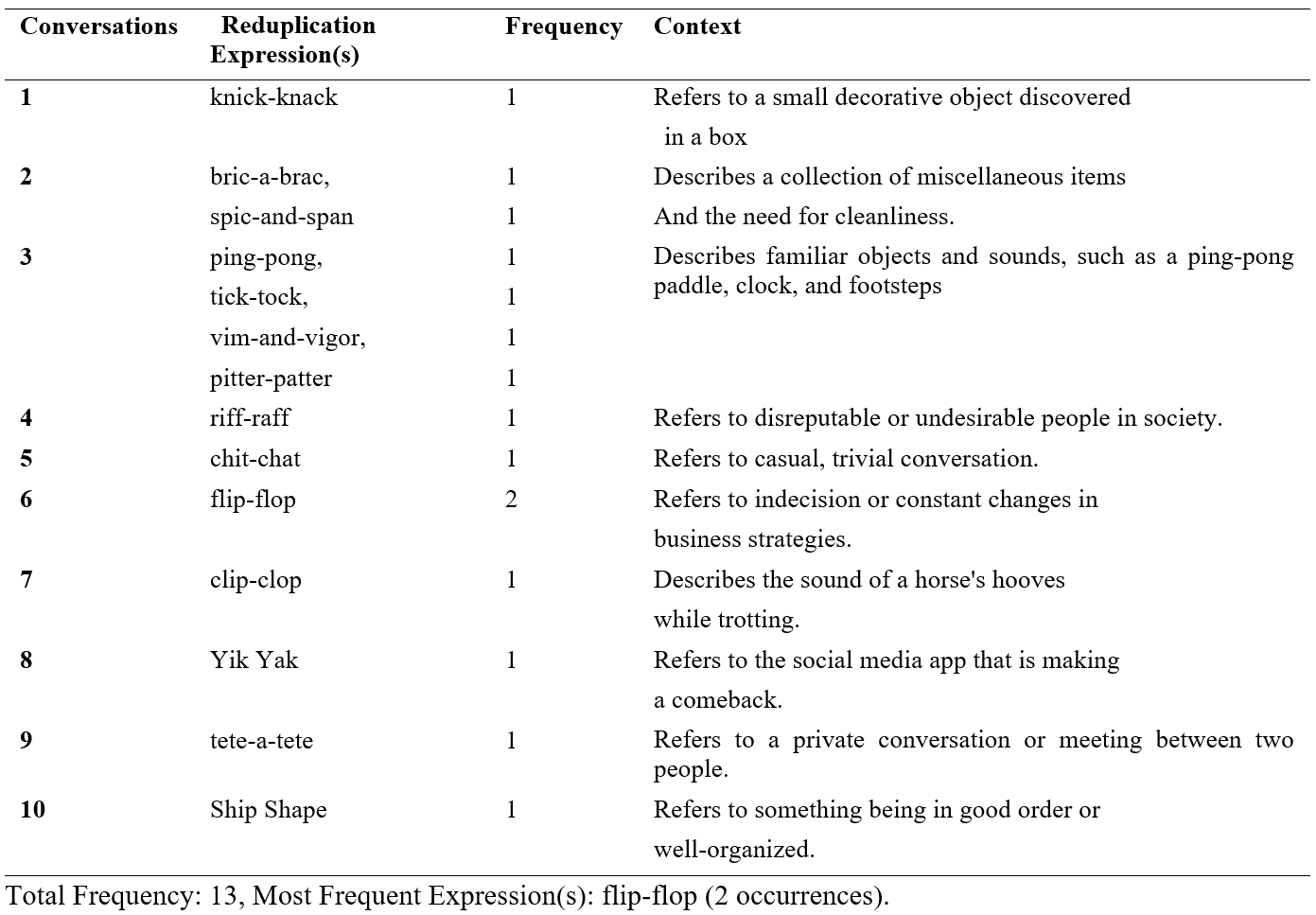A Semiotic Study of Reduplicative Words in Selected American Slang Expressions
Abstract
This study explores the semiotic aspects of American slang, specifically focusing on the phenomenon of reduplicative expressions in informal speech. Despite the extensive research on American slang, limited attention has been given to the cultural and mythical meanings embedded within reduplicative expressions. To address this gap, the study investigates how these expressions convey denotative, connotative, and mythical meanings within casual American discourse. The objectives of the study include: 1. To what extent does Barthes’ semiotic model hold potential for application in this study? 2. How are reduplicative slang expressions widely used in everyday American life? 3. To what extent do qualitative and quantitative methods have significance for this study? The methodology combines qualitative analysis, involving an in-depth examination of selected reduplicative expressions, with quantitative analysis to measure their prevalence and usage in informal speech. Barthes’ semiotic framework encompassing denotation, connotation, and myth forms the theoretical foundation of the study. The findings reveal that reduplicative slang expressions not only carry literal meanings but also embody rich cultural and social connotations, reflecting key aspects of everyday American life. These expressions enhance interpersonal communication and serve as markers of cultural identity within informal discourse. The implications of this study lie in its contribution to understanding the intersection between language and culture, providing insights for future research on semiotics and its application in linguistic studies.
Downloads
References
Barthes, R. (1972). L’empire des signes. Flammarion.
Barthes, R. (1991). Mythologies. The Noonday Press.
Burke, D. (1991). Street talk. Optima Books.
Chandler, D. (2007). Semiotics: The basics (2nd ed.). Routledge.
Creswell, J. W., & Creswell, J. D. (2018). Research design: Qualitative, quantitative, and mixed methods approaches (5th ed.). SAGE Publications.
De Saussure, F. (1916). Course in general linguistics. In Literary theory: An anthology (2nd ed., pp. 59–71).
Eble, C. (1996). Slang and sociability: In-group language among college students. The University of North Carolina Press.
Eco, U. (1997). A theory of semiotics. Indiana University Press.
Jaspersen, O. (1965). A modern English grammar on historical principles: Part IV: Morphology. Ejnar Munksgraad.
Jeresano, E. M., & Carretero, M. D. (2022). Digital culture and social media slang of Gen Z. United International Journal for Research & Technology, 3(4), 11–25.
Mattiello, E. (2005). A bomb and un casino: Intensifiers in English and Italian slanguage. In M. Munro (Ed.), UCLA Slang 3 (pp. xx–xx). UCLA Department of Linguistics.
Munro, P. (Ed.). (1997). UCLA slang 3. UCLA Occasional Papers in Linguistics (Vol. 18). UCLA Department of Linguistics.
Rubino, C. (2005). Reduplication: Form, function and distribution. Linguistic Typology, 9(1), 11–29.
Sornig, K. (1981). Lexical innovation: A study of slang, colloquialisms, and casual speech. John Benjamins. https://doi.org/10.1075/llsee.6
Wilden, A. (2001). System and structure: Essays in communication and exchange. Routledge.
Zappavigna, M., & Zhao, S. (2020). Selfies and recontextualization: Still life self-imaging in social media. In Photography and its publics (pp. 207–227). Routledge.


This work is licensed under a Creative Commons Attribution 4.0 International License.
Copyright for this article is retained by the author(s), with first publication rights granted to the journal.
This is an open-access article distributed under the terms and conditions of the Creative Commons Attribution license (http://creativecommons.org/licenses/by/4.0/).









1.png)









1.png)











